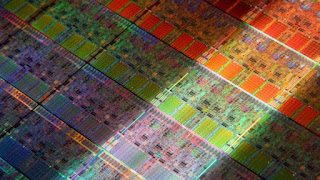 |
| Image Source: MIT Technology Review |
Topics: Electrical Engineering, Materials Science, Moore's Law, Semiconductor Technology
It was inevitable. I joined the industry after the US Air Force in 1989. The epitome of the industry was the nineties. As gate feature sizes shrank, we looked forward to the future, spurred on by two Star Trek series: The Next Generation and Deep Space Nine. This was when the Internet became commercial; flip phones looked an awful lot like Star Trek communicators. I went to my oldest son's school with scrapped wafers, bunny suits at his teachers' requests, eager to clone myself in their enthusiastic eyes and lives.
We'll still manufacture semiconductors in some form, like Gate-All-Around FETs. The transition from the old to the new is (for me) pausing and poignant.
In the next five years, it will be too expensive to further miniaturize—but chip makers will innovate in different ways.
Moore’s Law has been slowing for a while. But the U.S. industry that exploits it has finally recognized that it is about to die.
The Semiconductor Industry Association—made up of the likes of Intel, AMD, and Global Foundries—has published the 2015 International Technology Roadmap for Semiconductors. It suggests that, after decades of miniaturization, transistors look set to stop shrinking in size altogether by 2021. After that date, the report claims, it will not be economically efficient to reduce the size of silicon transistors any further.
The prediction is an acknowledgment that Moore’s Law—which states that the number of transistors in an integrated circuit doubles approximately every two years—isn't simply slowing. It’s grinding to a halt.
MIT Technology Review:
Chip Makers Admit Transistors Are About to Stop Shrinking, Jamie Condliffe
Comments